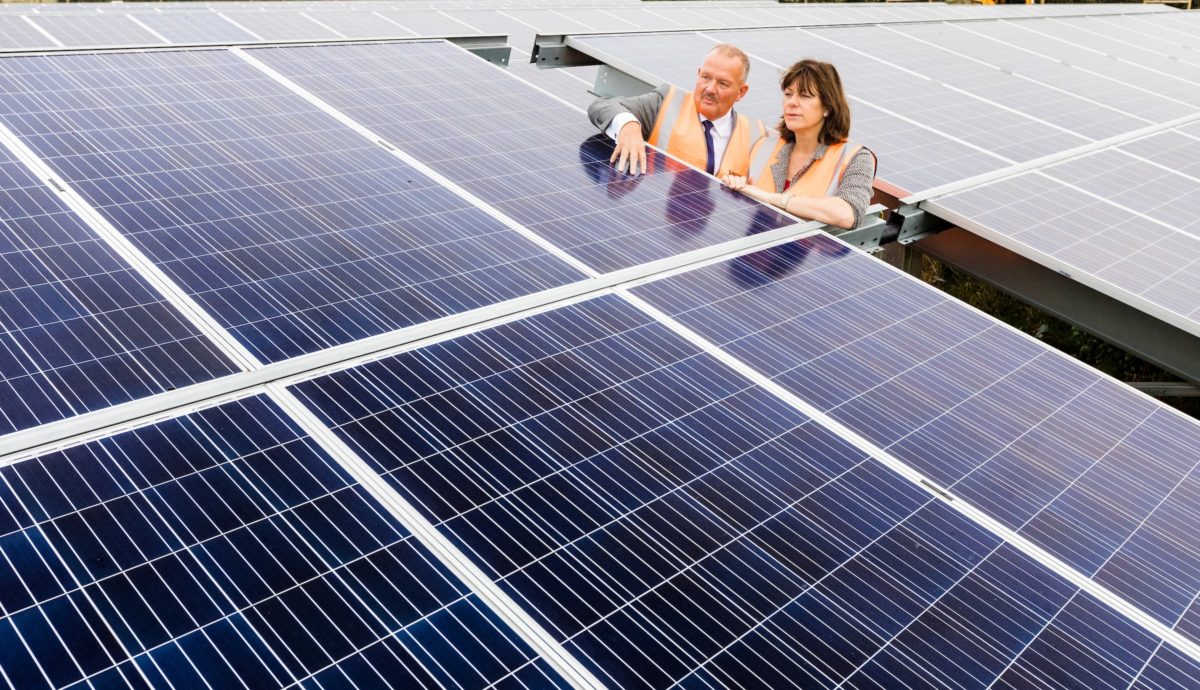pv magazine: Can you explain briefly how the collocation of a 6 MW battery storage at the Clayhill solar farm helped to make it financially viable and subsidy-free?
Steve Shine: The addition of the batteries has created additional revenue streams for the solar farm, which are separate from those achieved through the solar PV installation alone. A key benefit is that the five energy storage units allow the energy being generated to be stored and released into the grid when it is needed. Including at times when the panels are not generating, such as at night. This provides the site with the ability to produce energy 24 hours a day, rather than being an intermittent energy generator.
Anesco recently secured the ROC for three additional large-scale solar farms collocated with storage, and plans to explore doing likewise with additional solar farms in the UK. So, do you see this model as the most viable way forward for both Britain’s solar goals and it storage footprint?
We believe co-located sites are the future, for all the reasons mentioned above, but what you’re talking about here is two different things. ROCs are a separate issue. Retaining ROCs for existing solar sites where energy storage is retrofitted is very important, as the technology brings so many benefits. Therefore, it was vital that we found a model for doing so – with Anesco being the only company to do so to date. But the number of sites for which the technology and this model will be applicable to is naturally limited. In contrast, co-locating energy storage on new solar farms is the future, and the potential volume is infinite. Now we have found a way to make it happen without the need for government subsidy, the possibilities are endless.
We have also seen recently that Drax is mulling the construction of a 200 MW battery at a former coal site in Yorkshire. What, in your view, is supporting this thirst for more storage – is it simply a case that costs are much more attractive? Or have government policies played a role?
It’s likely to be a bit of both. Battery technology itself has got cheaper and more efficient and has now reached a point where it is viable on a large scale. Its role within the energy mix is also being fully recognised.
In your view, would it be folly for the government to persist with the creation of the Hinkley Point nuclear power plant, given the emergence of solar, solar+storage and offshore wind as more affordable and increasingly reliable power sources?
This specific case isn’t something we would comment on, as it’s a very complex issue. However, as a company, we are in favor of doing everything possible to ensure the U.K. meets its carbon reduction targets. Nuclear power has a role to play here, as to achieve zero carbon – or as close to it as possible – it makes sense to use nuclear alongside renewable technologies such as wind and solar.
What are the immediate future plans for Anesco? Do you hope to build more subsidy-free solar+storage? If so, can you give us more details?
We have another five projects of this kind in the pipeline and are actively seeking opportunities to talk to others who may wish to develop similar sites.
This content is protected by copyright and may not be reused. If you want to cooperate with us and would like to reuse some of our content, please contact: editors@pv-magazine.com.



So- is it subsidy free or ROC in the calculation?
No infos given on price calculation for Solar and storage electricity and grid benefits and UK market price expectations.
It`s clear that hybrid plants (wind, solar, storage) have many advantages.